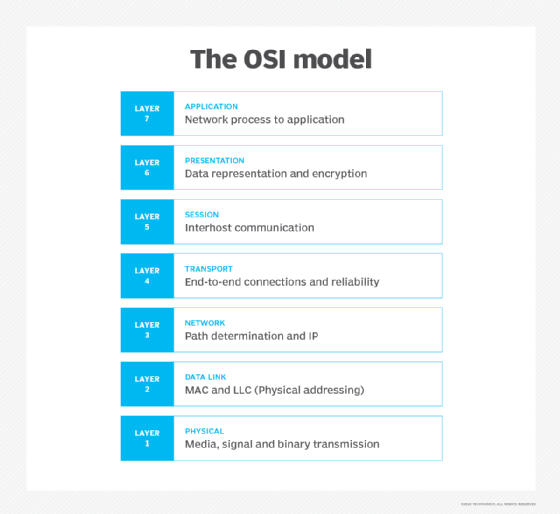bridge
What is a bridge?
A bridge is a class of network device designed to connect networks at Open Systems Interconnection (OSI) Level 2, which is the data link layer of a local area network (LAN). Bridges must connect like LAN protocols -- for example, Ethernet, Fiber Distributed Data Interface or token ring -- and bridged networks pass the packets of all higher-layer protocols running on the network. While any LAN protocol can be bridged, most LANs today are Ethernet-switched LANs, and most bridges are Ethernet bridges.
The biggest risk in bridging is traffic overload. All broadcast messages are sent across an entire LAN, and even messages directed to a single station are sent to every port on many LANs. This issue can be addressed by segmentation. Bridging builds an extended LAN by connecting LAN segments, and advanced bridge technologies aim at improving the options for an extension to eliminate the problems of traffic overload.

Bridge models and types
A bridge connects LAN segments to form a single "flat" network that appears as a continuous Level 2 domain or LAN. There are two common models of bridging: local and remote. Local bridging is created by linking LAN switches with local cables, and remote bridging is when two bridges are connected via a wide area network, or WAN. In today's network applications, local bridging is the most common model, used in both data centers as well as departmental and branch applications.
A simple bridge forwards all packets it receives, which means that there is no actual segmentation and that traffic growth problems are inevitable. To prevent this, advanced bridges, such as transparent and source-routing bridges, use a forwarding table to identify the path from the LAN where a packet originates to the bridged LAN where the destination resides, and send only to the destination LAN segment. If multiple paths exist, this can create a loop where packets multiply until they use all LAN capacity. Early models of bridging used a spanning tree algorithm to detect the best path to cover all possible destinations and eliminate loops.
The modern approach is to use multiport bridging, which detects complex bridging configurations where LANs have multiple possible bridge connections between them, making it a "shortest path" specification. This is the best approach to creating a resilient bridged network.
Difference between routers and bridges
Because IP networks dominate communications today, bridges are usually associated with the creation of an IP subnetwork, a LAN or a bridged-LAN community that serves as the basic unit of connection in IP/router networks, including the internet. Bridges, as elements of a LAN, are standardized by the Institute of Electrical and Electronics Engineers, in the IEEE 802 family. An IP subnet contains a router that serves as the default gateway to other IP subnets and the internet. In the bridged IP subnetwork, traffic between subnet members is passed at OSI Level 2, and traffic to others is directed to the default gateway for transmission at Level 3, the network layer.
A bridge can be combined with a router in a product sometimes called a brouter, but the term is no longer in common use. Instead, most routers have some support for bridging features, allowing the default gateway to serve as both a bridge and a gateway to other subnetworks.








